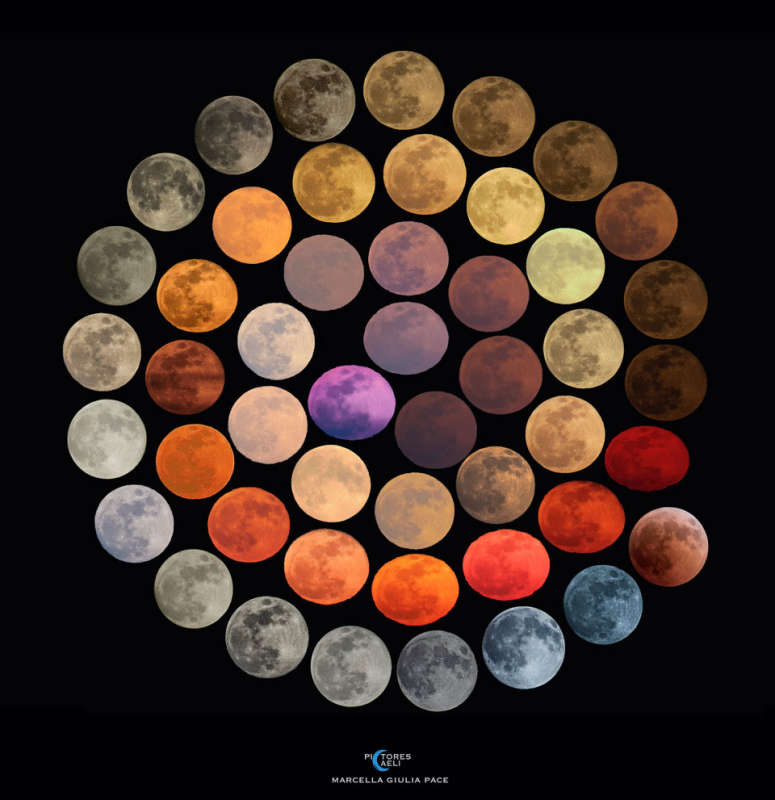Credit & Copyright: Marcella Giulia Pace
Explanation:
What color is the Moon?
It depends on the night.
Outside of the Earth's atmosphere, the
dark Moon,
which shines by reflected sunlight, appears a
magnificently brown-tinged gray.
Viewed from inside the
Earth's atmosphere, though, the moon can appear quite different.
The featured
image highlights a collection of apparent colors of the full moon documented
by one astrophotographer over 10 years from
different locations across
Italy.
A
red or yellow colored moon usually indicates a moon seen near the horizon.
There, some of the
blue light has been scattered
away
by a long path through the
Earth's atmosphere,
sometimes laden with fine dust.
A blue-colored
moon is more rare and
can indicate a moon seen through an atmosphere carrying larger dust particles.
What created the purple moon is
unclear
--
it may be a combination of several effects.
The last image captures the
total lunar eclipse of 2018 July --
where the moon,
in Earth's shadow, appeared a
faint red -- due to light
refracted through
air around the
Earth.
Today there is not only another full moon but a
total lunar eclipse visible to observers
in North and
South America --
an occurrence that may lead to some
unexpected lunar colorings.
1999 2000 2001 2002 2003 2004 2005 2006 2007 2008 2009 2010 2011 2012 2013 2014 2015 2016 2017 2018 2019 2020 2021 2022 2023 2024 2025 |
Yanvar' Fevral' Mart Aprel' Mai Iyun' Iyul' Avgust Sentyabr' Oktyabr' Noyabr' Dekabr' |
NASA Web Site Statements, Warnings, and Disclaimers
NASA Official: Jay Norris. Specific rights apply.
A service of: LHEA at NASA / GSFC
& Michigan Tech. U.
|
Publikacii s klyuchevymi slovami:
Moon - Luna
Publikacii so slovami: Moon - Luna | |
Sm. takzhe:
Vse publikacii na tu zhe temu >> | |
